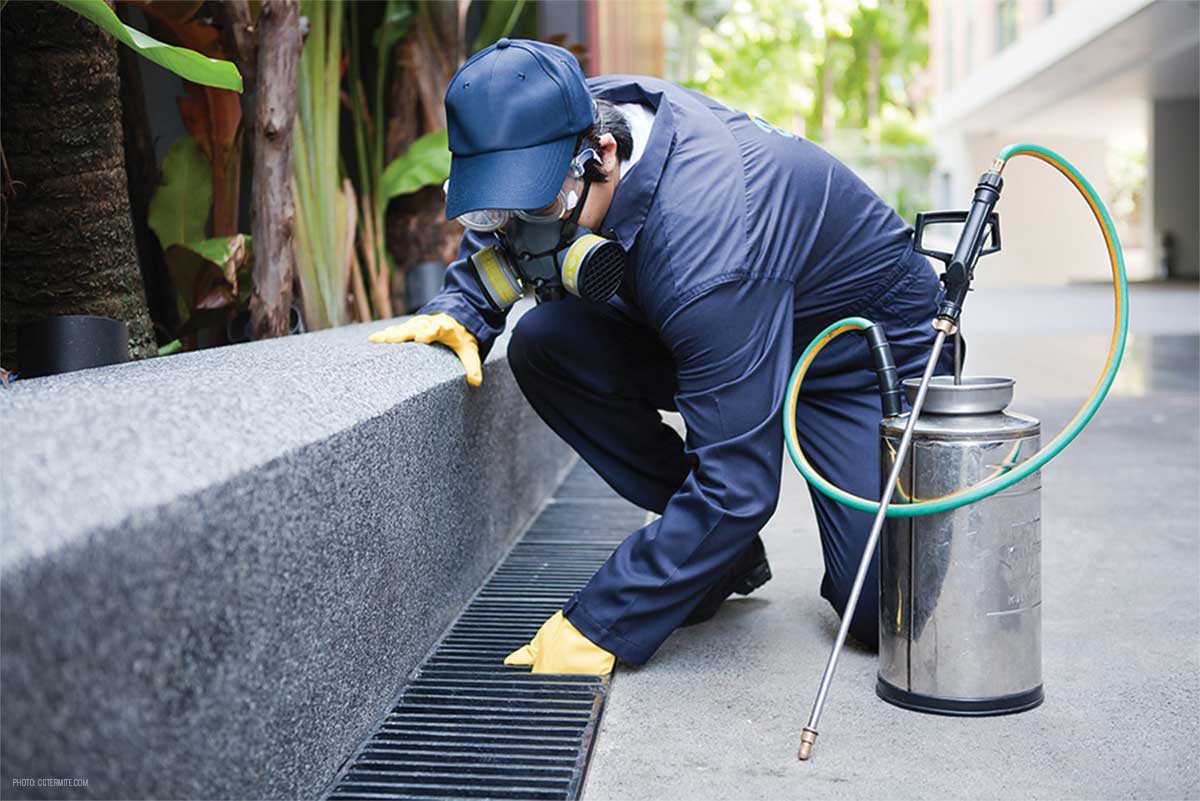A Comprehensive Overview to the Different Kinds Of Parasite Control Approaches
With the myriad of insect control methods offered, it can be frustrating to locate the most effective service for a specific pest issue. In this extensive overview, we will discover these various kinds of insect control approaches, supplying understandings into their applications and advantages. By the end, you will certainly have a more clear understanding of which technique may be the finest fit for your insect control requirements.
Chemical Insect Control Methods

One usual kind of chemical parasite control is insecticides. Insecticides target particular insects, such as mosquitoes, termites, or ants, and can be used both indoors and outdoors.
One more type of chemical pest control is rodenticides. These are chemical materials designed to regulate populations of rats, such as rats and computer mice.
Herbicide, additionally recognized as herbicides, are an additional sort of chemical parasite control approach. Herbicides are made to selectively kill unwanted plants, referred to as weeds, without triggering damage to preferable plants. They are frequently made use of in agriculture, landscaping, and horticulture to regulate the growth of undesirable vegetation.
While chemical insect control techniques can be highly effective in getting rid of pests, it is vital to use them sensibly and comply with safety guidelines. Overuse or misuse of chemical pesticides can have adverse effect on human health and the environment. It is critical to use these techniques responsibly and take into consideration different insect control strategies whenever feasible.
Organic Bug Control Techniques
Biological parasite control methods include the use of living microorganisms or all-natural compounds to handle and control pest populations. Unlike chemical methods, which typically count on synthetic pesticides, biological control approaches utilize the natural adversaries of pests to control their populaces. This approach is taken into consideration even more eco-friendly and lasting, as it reduces the use of unsafe chemicals and reduces the threat of chemical resistance.
One widely used biological bug control approach is the introduction of natural predators or bloodsuckers. As an example, ladybugs are presented to regulate aphids, while certain wasp species are released to target caterpillars. These killers and bloodsuckers eat pests, minimizing their numbers and preventing infestations.
One more biological control technique is the use of pathogens. Specific microorganisms, infections, and fungis can be employed to infect and eliminate specific insects. The microorganism Bacillus thuringiensis is typically used to regulate caterpillars, as it produces toxic substances that are lethal to these pests.
Organic control approaches can also include the usage of pheromones or natural substances that disrupt the breeding patterns of parasites. By disrupting their recreation, these approaches help to reduce pest populaces gradually.
While organic insect control techniques are typically efficient, they may need longer durations to accomplish wanted outcomes compared to chemical methods. In addition, careful factor to consider needs to be provided to the option and release of all-natural opponents to avoid unintended damage to helpful microorganisms or ecological communities.
Physical Insect Control Approaches
To successfully manage and regulate pest populations, different insect control approaches called physical parasite control techniques are employed. These approaches include making use of physical obstacles, traps, or tools to stop insects from accessing or damaging residential property. One typical physical pest control technique is using displays or webs to maintain pests out of buildings or gardens. These screens are typically constructed from fine mesh product that enables ventilation while stopping parasites from going into. An additional physical pest control method is the installation of fences or walls to keep bigger pests, such as deer or rabbits, out of gardens or farming fields. These barriers physically obstruct the parasites' accessibility to the area, minimizing the possibility for damage. In addition, catches and tools can be made use of to record or ward off bugs. As an example, sticky catches can be put in locations where pests are a problem, and the bugs become adhered to the adhesive surface area. Ultrasonic gadgets can also be utilized to send out high-frequency noises that are undesirable to parasites, creating them to leave the location. Physical insect control approaches are an eco pleasant choice to chemical pesticides, as they do not rely on the usage of damaging chemicals.
All-natural Parasite Control Techniques
Natural parasite control methods provide a lasting and eco-friendly technique to handling and eliminating insects. These techniques focus on the use of all-natural compounds and biological agents, reducing the requirement for chemical pesticides that can harm the environment and human health and wellness. Among one of the most common natural insect control approaches is biological control. This entails introducing all-natural killers or bloodsuckers to victimize or parasitize the pests. Ladybugs are image source often introduced to gardens to regulate aphid populaces. Another natural technique is the usage of repellents obtained from plants. Specific plants, such as marigolds, lavender, and pepper mint, what does pest control cover give off fragrances that repel insects like mosquitoes, flies, and ants. In addition, social control practices can be employed to avoid and handle parasite infestations. This includes appropriate hygiene, regular maintenance, and promoting biodiversity in the garden. Revolving crops, getting rid of garden particles, and encouraging natural killers can assist stop the buildup of pests. By embracing these all-natural parasite control approaches, individuals and neighborhoods can successfully handle pests while decreasing the negative impacts on the atmosphere and human wellness.
Integrated Pest Monitoring (IPM)
Integrated Parasite Management (IPM) is a detailed and organized approach to pest control that integrates different approaches and strategies to efficiently handle bugs while minimizing the use of chemical pesticides. IPM aims to preserve pest populaces listed below the financial injury degree by utilizing a combination of cultural, biological, and chemical control methods.
Cultural control methods involve modifying the environment to make it less favorable for pests. This can include practices such as crop rotation, proper sanitation, and the use of immune plant selections. By creating unfavorable conditions for bugs, social control approaches can substantially lower pest populations.

Chemical control techniques are utilized as a last resort in IPM. They entail the targeted and wise use pesticides to take care of insect populations. Unlike conventional parasite control techniques, IPM intends to lessen using chemical pesticides by employing different techniques.
Integrated Parasite Administration (IPM) is a proactive technique that focuses on long-term parasite management instead than relying exclusively on responsive actions. By combining multiple control methods, IPM offers a much more lasting and eco-friendly approach to pest control.
Conclusion
To conclude, this article has actually provided an extensive introduction of the different sorts of bug control approaches. It reviewed chemical, organic, physical, and all-natural bug control approaches, along with the incorporated bug monitoring technique. By recognizing these numerous techniques, people can make educated decisions on which pest control method is most suitable for their specific needs and choices. Effective pest control is crucial in maintaining a healthy and pest-free atmosphere.